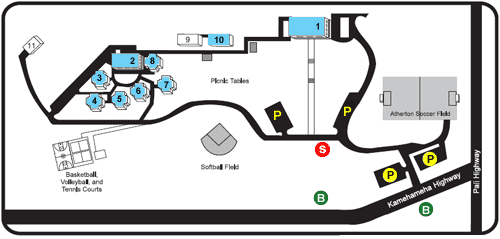In the mid-1820s and early-1830s, several clashes (writers of the time referred to them as ‘ourtages’) happened that included the missionaries, merchants and whalers.
In 1825, an assault was made upon the house and family of Mr. Richards, by the riotous crew of the English whaleship Daniel, then lying at anchor off the town of Lāhainā; and that Capt Buckle, the master of that ship, evidently connived at the assault, (if he did not directly promote it,) and is therefore justly responsible for it (the First Outrage at Lahaina.)
About a year afterwards, a similar attempt to abrogate the laws of that place was made by the crews of several English and American whale-ships in concert, who doubtless acted with the connivance of their captains.
The sailors threatened to kill Mr. Richards; but he was providentially absent from the islands, on important business of the mission. They went in a body to his house to demolish it; but found it carefully guarded by the natives.
They then took away his hogs and poultry, which were at some distance from the house, and were probably the only property belonging to him, on which the rioters could lay their hands.
They continued several days in the town, trampling on the rights of the natives, breaking open houses, and committing other indignities (the Second Outrage at Lahaina.)
In a letter from Hoapili, Governor of Maui, to Kaʻahumanu, Regent (October 24, 1827,) Hoapili described the Third Outrage of Lāhainā:
“Love to you Elisabeth Kaahumanu.”
“This is the word which I have to declare to you. We have recently been in difficulty; we here of Maui. No one else is involved, I alone.—It was my own personal resolution.”
“This is the ground of the difficulty which you are to consider – a strict regard to God: because you and we had said, the women must not go on board the ships for the purposes of prostitution. I have strictly observed this word of ours.”
“There have recently gone off secretly several women for purposes of lewdness, Nakoko and Mikabako and others, whose names I do not know.”
“When I heard by the people, that the ship had got possession of the women, then I requested the commander of the ship (the John Palmer,) captain Clark (Elisha Clarke,) to return to me the women. He would not consent: – he ridiculed what I said.”
“That day passed; next morning I urged him again; three times I insisted on it.”
“He said to me: Your efforts are vain. It is not right. It is not thus in Great Britain. It is not right for you to withhold women from Englishmen. Do not keep back the women, that go in the bad way; otherwise a man of war will come and destroy you all.”
“Then I replied; I do not at all regard what you have said. There is but one thing that is right in my view – that you send me back the women: – but understand, if you do not return them, I shall detain you here on shore, till we get the women. Then you may go to the ship.”
“My requirement was not at all complied with.”
“Then I sent men to take the boat. The boat was detained by me; and the foreigner was detained by me, here on shore. He said to me, this place will be full of ships; and Maui shall be free from tabu, or entirely burnt, so that not a cluster of houses shall be left. My ship is ready to fire upon you this night.”
“I replied, if the guns of your ship fire, I will take care of you. You and I and my chief will go together to another place. If your men fire from the ship, we the people of the island will remain quiet, but if the people of the ship land here on shore to fight us, then my people will fight them.”
“You and I will sit still, and let your people and mine do the fighting. I will take care of you. If you do not give me back the women, you and I will dwell here on shore, and you shall not return to your vessel. I have but one desire and that is the return hither of the women. I ended.”
“We continued together from the early to the latter part of the evening, when the cannon of the ship were fired.”
(Five balls were discharged, all in the direction of the mission house. Capt. Clark afterwards asserted that he ordered his men to fire over the mission house, and not at it. One ball passed very near the roof.) (Tracy)
“Mr. Richards had come to me saying, ‘I have come to promote reconciliation, out of love to you and out of love to them.’ Mr. Richards inquired of me ‘What is your design?’ I replied, my only design is, that the women be returned. We were persuaded to yield by Mr. Richards. I therefore sent back the foreigner; but did not obtain the women.”
“These are my thoughts concerning the recent doing in this place belonging to your king. It is nearly right perhaps, it is nearly wrong perhaps. He said to me, I shall sail to Oahu. Boki and the consul will come and fight us.”
“Where are you? Look out well for Nakoko and those with her, and if you can get them, send them back here to Maui; and if the vessel does not anchor, then give directions to Pelekaluhi. It is ended. Love to you all, Hoapiri – Kane.” (Missionary Herald)




























